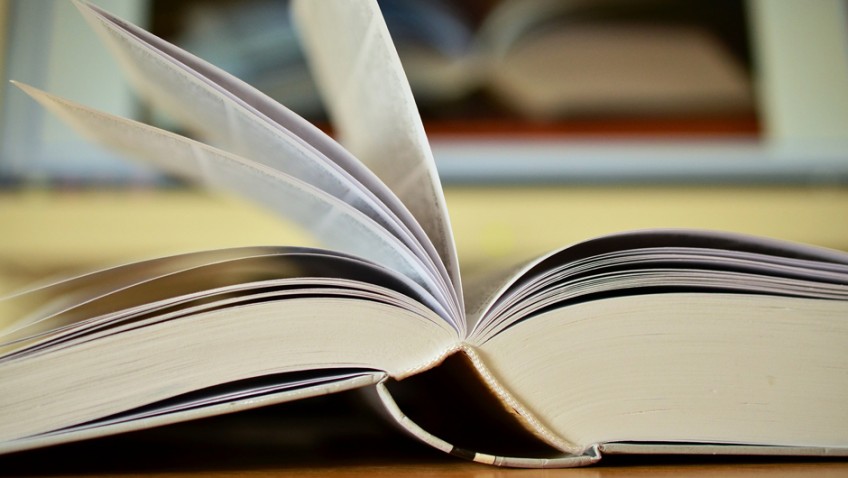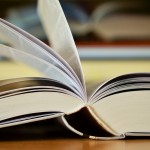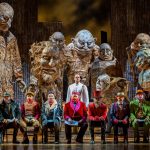Robert Tanitch’s Round-Up of Books No. 2 (2017)
Obama: An Intimate Portrait by Pete Souza (Allen Lane £40). Souza was the White House professional photographer. Obama, apart from his own family, spent more time with him than anybody else. Souza was always on call. Here are 300 photographs out of the 2 million he took of the Presidency. It’s an amazing document, this 8 year historical record. He captures the big and the small moments, the political and the family scenes, the interacting with world leaders, congress, staff and general public. Most of the time Obama, a charismatic charmer and very photogenic, doesn’t know he is being photographed. There is a great shot, casual, thoughtful, a Souza favourite, of him sitting on the Oval Room desk, his feet not touching the floor. There is a little boy touching his hair to find out if it feels the same as his hair. Obama is great with young children.
Gandhi: An illustrated biography by Pramod Kapoor (Thames & Hudson £24.95) This book is a quick and easy introduction to Mahatma Gandhi (1869-1948), the moral teacher, reformer, patriot, who always advocated a policy of non-violence and, non-cooperation in order to achieve independence. We all have this iconic image of a bespectacled Gandhi, stripped of clothes, in loin cloth, shawl and sandals and of him fasting and marching 200 miles to the sea. He first adopted this potent symbol of transparency in 1921. The big surprise is the photo of him as a handsome young man, impeccably dressed in a suit, when he was a lawyer in Johannesburg in 1914.
Mr Lear: A Life of Art and Nonsense by Jenny Uglow (Faber & Faber £25). The Owl and the Pussycat is everybody’s favourite poem. How very pleasant it is indeed to know Edward Lear (1812-1888). Jenny Uglow has written an excellent biography. A great eccentric, he always felt an outsider. He is remembered chiefly for his nonsense verse and limericks rather than his exquisite paintings of landscapes. He suffered from epilepsy, bad eyesight and he was gay. He taught Queen Victoria how to draw.
Byron’s Letters & Journals (Oxford University Press £14.99). Byron, poet, philanderer, homosexual and freedom fighter and of course, as Lady Caroline Lamb knew only too well, mad, bad and dangerous to know, was the ultimate celebrity. This selection, which reads like a biography in his own words, is a dramatic and volatile portrait which takes the reader from England to Greece, from fame to infamy. Byron is a witty raconteur and the punctuation – all those dashes – give the letters their witty pace.
Ma’am Darling: 99 Glimpses of Princess Margaret by Craig Brown (4th Estate £16.99). Witty and regal, rude and demanding, Princess Margaret aroused passion and indignation. Had she lived in the 18th century the cartoonists and the painters, such as Gilray and Hogarth, would have had a field day. The tale of Princess Margaret is pantomime as tragedy and tragedy as pantomime. Craig Brown has a lot of fun telling her story. Somebody is no doubt already turning it into a film or a play or a musical or a television series.
When They Go Low, We Go High by Philip Collins (4th Estate £16.99). The subtitle is Speeches That Shape The World and Why We Need Them. This is a great book for anybody who enjoys good rhetoric and wants to propagate and protect democracy. Collins, who was Chief Speech writer to Prime Minister Tony Blair, investigates and analyses 25 famous speeches. His orators include Cicero, Jefferson, Lincoln, Kennedy, Obama, Churchill, Elizabeth 1, Wilberforce, Pankhurst, Mandela, Martin Luther King, Robespierre, Hitler, Castro. Words can and do change the world.
We’ll Always Have Casablanca by Noah Isenberg (Faber & Faber £16.99). The Life, Legend and Afterlife of Hollywood’s Most Beloved Movie: Round up the usual suspects. Here’s looking at Bogart, Bergman, Rains, Veidt, Greenstreet, Lorre, Dooley Wilson and S Z Sackel. This doomed wartime affair is one of the great romantic dramas of all time. How many times have you seen it? This book will want to make you see it yet again. Michael Curtiz’s film becomes more interesting and poignant when you know just how many of the people involved in it were actually émigrés and refugees in real life fleeing from the Nazis.
Great Shakespeare Actors: Branagh to Burbage by Stanley Wells (Oxford University Press, £11.99). Here is a record of some of the greatest performances: Garrick’s Hamlet, Siddons’ Volumnia, Macready’s Leontes, Booth’s Hamlet, Irving’s Shylock, 39 actors in all. Wells’s vignette reports will make you wish you had been there. Nothing is more ephemeral than the performances of actors. Gielgud used to say he was grateful there were no filmed recordings of his famous roles, fearing his acting would seem dreadfully old-fashioned to modern audiences. Eye-witness accounts are good, and especially when they are by actors such as Helen Faucit in the 19th century and by such academics as Stanley Wells in the 20th century, are invaluable.
To learn more about Robert Tanitch and his reviews, click here to go to his website












